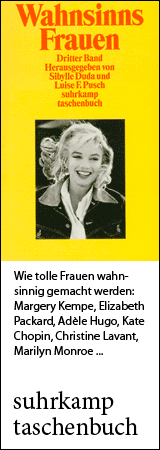(Go-Fukakusa-in no Nijô, wörtl. „Ex-Kaiser Go-Fukakusas Nijô“ / literal translation: Ex-emperor Go-Fukakusa’s Nijô )
born in 1258
date of death unknown; after 1307
Japanese writer
Biography • Literature & Sources
Biography
In the year 1940, the scholar Yamagishi Tokuhei山岸徳平 (1893–1987) came across a previously unknown manuscript with the title Towazugatari (literal translation: “a story nobody asked for”) as he was sifting through the geography section of the holdings of the Imperial Household Library in Tokyo. Only a single manuscript of this autobiographical novel from the Kamakura period (1185–1333) had survived the flow of time and was lost for over 600 years before being randomly discovered by Yamagishi. This occurrence attracted the interest of many Japanese literary scholars, as the known court literature of the Kamakura period had been mainly made up of so called giko monogatari擬古物語 (“pseudo-classical tales“). Unlike these imitations of previously written stories, the author of the Towazugatari, Lady Nijô 二条, created a refreshingly new, original work that contains narrative finesse as well as psychological acumen.
Since no historical records with information about the life of the author exist, the discovery of this literary work is also of historical value, as it provides in insight into the life of a remarkable character at the Kamakura court. The historical frame of reference and with it the factuality of the Towazugatari is provided, however, through the extant transmitted records of the – mostly male – family members, lovers and acquaintances that Lady Nijô mentions in her work.
Born as the daughter of both the chief councilor of state Koga Masatada久我雅忠 (1223–1272), a descendant of the Minamoto-clan, and the daughter of the chief councilor of state Shijô Takachika 四條隆親 (1203 – 1279), Lady Nijô was of aristocratic birth. After the death of her mother when Nijô was two years old, she was placed into the care of the ex-emperor at the time, Go-Fukakusa 後深草院 (1243–1304; r. 1246–1259) and grew up at court as the adopted daughter of the dowager empress Lady Kitayama 北山 (1195–1302). Ever since the time of her birth, Lady Nijô's ties to ex-emperor Go-Fukakusa were twofold, as her father had served Go-Fukakusa's father Go-Saga 後嵯峨 (1220 – 1272; r. 1242 – 1246) and her mother had first been Go-Fukakusas wetnurse and later introduced him to the art of love. Because of an agreement between her father and Go-Fukakusa, Lady Nijô was appointed the ex-emperor’s concubine at the young age of 14 and henceforth served him at the court in her function as lady-in-waiting. At the time it was customary to assign street names to the ladies-in-waiting at the court, depending on their rank. “Nijô” literally translates to “second avenue”; her birth name is not known. Even though Go-Fukakusa was fond of her and payed her particular attention because he had been in love with her mother, Nijô was never awarded the rank of consort to the ex-emperor, which left her with an unstable position at court. Perhaps the early death of her father – Nijô was 15 years old at the time – and the death of the only son that she bore Go-Fukakusa contributed to her never ascending in her rank at court. According to Nijô, it was the jealousy of Go-Fukakusa's main consort, ex-empress Higashi Nijô 東二条院 (1232–1304), that led to her removal from court in the year 1283 at the age of 25. Following the dying wish of her late father, Nijô became an ordained Buddhist nun in her exile and spent her remaining years on pilgrimages visiting various temples, cloisters and shrines, copying down Buddhist sutras and sitting down in 1306 to write her memoirs.
While reading the Towazugatari one gains the impression that Lady Nijô’s intention behind the writing of her novel might have been a need for telling her side of the story rather than conveying as truthful an account of her life as possible. In this way, she utilized literature as a means to defend her reputation and created an idealized image of herself in her narrative. It was most likely in her interest to portray herself with an air of importance and in a positive light in order to restore her family name (also in the literary sense) and to immortalize herself and her family through association with the ex-emperor. Lady Nijô closes the account of her life with the following sentence: “That all my dreams might not prove empty, I have been writing this useless account – though I doubt it will long survive me” (cited from the English translation of the Towazugatari by Karen Brazell, “The Confessions of Lady Nijô”). As we know today, she could not have been more wrong, as the account of her life did not only long survive her but is being appreciated for its literary quality by scholars around the world now, 700 years later.
Author: Hanna Schmidts
Literature & Sources
Kenreimonin Ukyô no Daibu shû; Towazugatari建礼門院右京大夫集; とはずがたり; Kubota Jun (Note, transl. 久保田淳 (校注/訳)). 2. Ed. [I1999]. Tokyo: Shôgakukan, 2006 (= Shinpen Nihon koten bungaku zenshû; 47).
The Confessions of Lady Nijô; transl. by Karen Brazell. OT: Towazugatari
Mostow, Joshua S.: “On Becoming Ukifune: Autobiographical Heroines in Heian and Kamakura Literature”, in: Crossing the Bridge: Comparative Essays on Medieval European and Heian Japanese Women Writers; ed. by Barbara Stevenson and Cynthia O. Ho. New York [a.o.]: Palgrave, 2000, p. 45–60.
Sarra, Edith: “Towazugatari: Unruly Tales from a Dutiful Daughter”, in: The Father-Daughter Plot: Japanese Literary Women and the Law of the Father; ed. by Rebecca L. Copeland and Esperanza Ramirez-Christensen. Honolulu: University of Hawai'i Press, 2001, p. 89–114.
Tonomura, Hitomi: “Coercive Sex in the Medieval Japanese Court: Lady Nijô’s Memoir”, in: Monumenta Nipponica 61:3, 2006, p. 283–338.
If you hold the rights to one or more of the images on this page and object to its/their appearance here, please contact Fembio.



